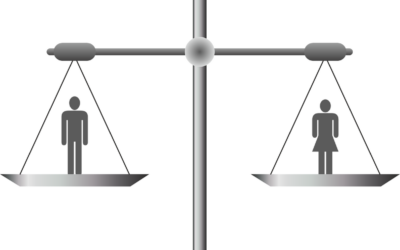By Max Landry, co-CEO and co-founder, Peppy
This article is featured as part of our International Women’s Day coverage which we’re running on IFA Magazine right throughout this week to celebrate the role of women and how we can better support women’s needs in the workplace as well as shining a light on women in finance. #IWD2022 takes place on March 8th.
International Women’s Day takes place on 8th March, and this year’s theme of #BreakTheBias is putting gender equality in the spotlight for business leaders.
Employees, and particularly women, are choosing progressive employers where their life ambitions, health and work-life balance are prioritised – these are the new deal-makers , often even more so than salary. If organisations are to achieve a gender-diverse workforce and leadership pipeline, they must look towards a new-generation of employee benefits.
The workplace is evolving at break-neck speed. To attract top talent, employers must position themselves as a destination employer. To then retain them, they must support their colleagues’ wider ambitions and actively drive more women towards senior positions.
Many workplace benefits packages implemented today would have been unheard of in the past. Pre-pandemic, when we talked about employee benefits, we spoke about discounted gym memberships and cycle-to-work schemes. Nowadays, businesses are turning to employee benefits that are relevant to today’s ways of working and add real value to their people’s lives.
Here are three ways that a new generation of employee benefits is impacting and improving equality for women in the workplace.
Specialist women’s health solutions drive gender diversity
Many companies now provide support for female, trans and non-binary staff through menopause, fertility issues, pregnancy and miscarriage. Increasingly, employees view this support as essential. And employers are sitting up and taking notice – almost half have a specific strategy for supporting women’s health and a further third plan to address women’s health specifically in their wellbeing strategy.[1]
Last year, a study we ran of over 500 HR leaders revealed that just under half already offer practical or emotional support to their employees to help them manage their menopause symptoms, and a further fifth were planning to provide this support in the future.[2]
Women of menopausal age are the fastest-growing demographic of the UK workforce, and 1 in 4 of these women will consider leaving their job due to their symptoms, so it’s no wonder leading businesses are recognising the need for specialist menopause support.
By updating their workplace wellbeing solutions, forward-thinking companies are specifically targeting menopause, fertility, pregnancy and early parenthood, as well as specific women’s health issues like periods, fertility conditions and common gynaecological issues.
It’s not just gender diversity that stands to benefit, but also generational diversity. According to the same study of HR leaders, two-thirds of HR leaders acknowledge that if they want more women to reach C-suite positions, they need to provide better menopause support.[3]
Digital benefits allow employers to support a whole workforce
The pandemic and the subsequent rise in remote and flexible working have led to unprecedented acceleration in development and uptake of digital employee benefits. Last year, 8 in 10 employers said they were likely to invest in digital healthcare delivery in the next five years.
Digital benefits are an essential conduit that enable employers to deliver accessible, inclusive support to all employees, including those who work remotely. For people with childcare responsibilities and carer roles (who are more likely to be women), providing this support can have a drastic impact on their ability to remain in work.
Women are more than twice as likely to have been forced to quit their job due to being overwhelmed with unpaid caring responsibilities, and are more likely to have a part-time role or work flexible hours than men. All this means it is harder for them to access benefits that are only accessible in-person or during 9-5 working hours.
In addition, digital benefits have been shown to play a crucial role in providing health and wellbeing support to other groups, such as the LGBTQ+ community, giving them immediate access to specialists in a safe, remote setting.
With digital benefits, employees can access the care and support they need, when they need it and on their terms. What’s more, for individuals looking for discreet, anonymous support for private or ‘taboo’ issues – such as menopause, eating disorders or menstruation – digital support is often infinitely preferable.
Employee benefits are a conduit to a more inclusive culture
It’s not only people’s physical workplaces and habits that have changed dramatically, but also their attitudes towards work. The emphasis on work-life balance will continue even after the UK has begun ‘living with Covid’, and so must organisations’ support for their people’s holistic wellbeing and ambitions.
It is not enough for organisations to talk about being inclusive and supporting colleagues who identify as female – they need to practise what they preach. Often, the first step towards breaking down gender stereotypes in the workplace is to raise awareness of the issues faced. When a company introduces a new employee benefit designed to support the diversity of its workforce, senior decision makers – including men – must be part of the conversation. This is a huge learning opportunity for C-suite and line managers.
This new league of employee benefits has the capacity to empower employers to start the conversation around issues facing their female workforce, whilst giving HRs and managers a clear pathway of support that they can signpost. Crucially, they also play a significant role in boosting an organisation’s employer brand, helping them be perceived as responsible, proactive and progressive. The impact trickles down, with the potential to vastly improve the engagement, attraction and retention of a diverse workforce.
And it’s not just those women joining or already part of progressive businesses who will reap the rewards of future-thinking employee benefits, but the wider workforce too. With high-profile accolades such as the Times Top 50 Employers for Women and transparent company reviews on websites like LinkedIn and Glassdoor, there’s nowhere to hide for employers lagging behind.
So, if International Women’s Day inspires any employer to make 2022 the year they meet their gender diversity targets and become a destination employer for women, taking action through their employee benefits package is the natural first step.
[1] REBA Employee Wellbeing Research 2021.
[2] Research by Peppy, September 2021.
[3] Research by Peppy, September 2021.
















